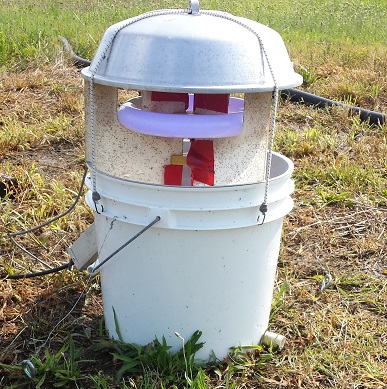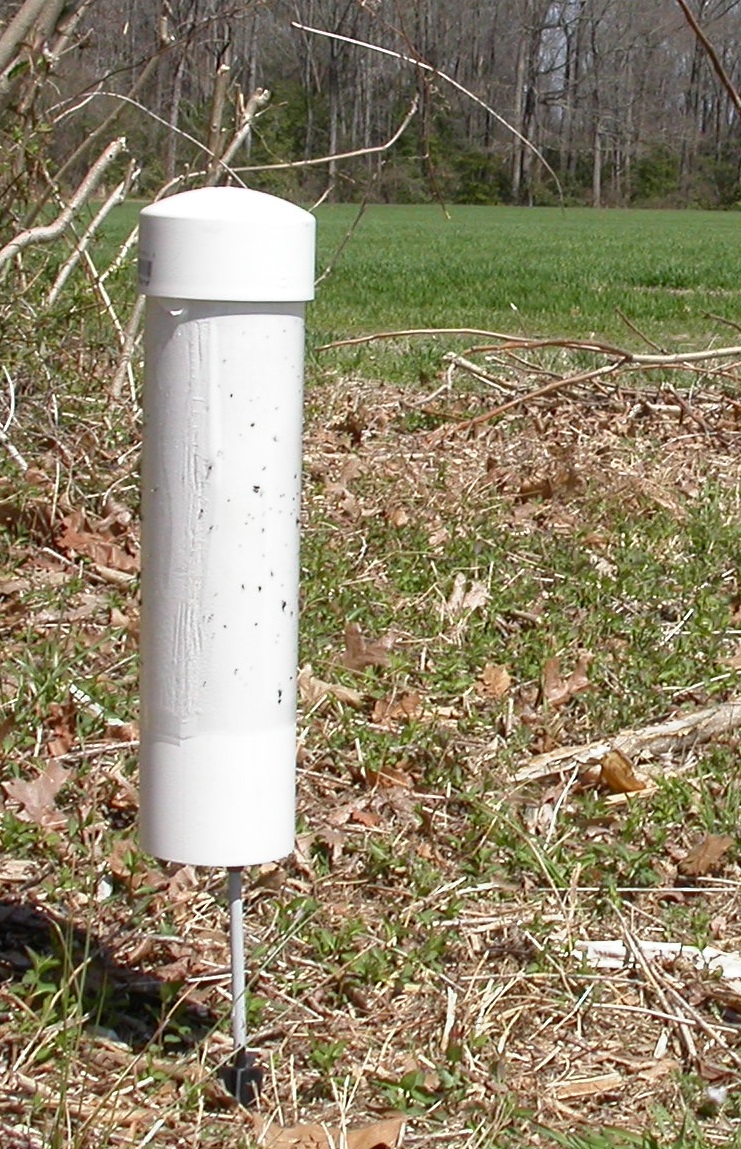Our scouts (Ed Seymore, Jamie Hogue, and Dr. Herbert’s Entomology team) have started sampling soybean fields across Virginia for kudzu bug and brown marmorated stink bug. The file attached at the end of this paragraph indicates the counties where kudzu bug has been found (blue counties = kudzu bug found in soybean; maroon counties = kudzu bug found on other hosts such as kudzu). Please note that we have not yet sampled all counties on our survey route. I will continue to provide weekly updates on this, including pest population levels, as the season progresses. KB_7_16_2015
Category Archives: Insect
Black light trap captures for the week ending July 16, 2015
Corn earworm moth catches from reporting stations were low this week. Nightly averages were: Warsaw=zero; Southampton (Courtland)=zero; Suffolk=0.4. Brown marmorated stink bug nightly averages were: Warsaw=zero; Southampton (Courtland)=1.3; Suffolk=zero. Thanks to the following for their reports this week: Mary Beahm, Austin Brown, and Dr. Herbert’s Entomology team. The image of the “bucket style” black light trap is courtesy of Austin Brown. 
Black light trap report for the week ending July 9, 2015
This week, corn earworm moth captures in black light traps were zero at Warsaw, Suffolk, and Southampton. Brown marmorated stink bug catches (nightly averages) were 0.1 for Warsaw, zero for Suffolk, and 0.3 for Southampton. Thanks to Mary Beahm, Ames Herbert and crew, and Austin Brown for their reports this week.
Kudzu Bug Overwintering Emergence and Predictions for the Coming Season
Please see the attached report (pdf document) by Dr. Herbert: Kudzu_bug_prediction
Kudzu bug reports–April 23, 2015
We captured a kudzu bug in a Southampton County, VA sticky trap this week. Please see the map for more details. Kudzu_bug_traps_22_Apr_2015

Kudzu bug first reports through April 16, 2015
Our kudzu bug trap operators provided first reports in three more counties since last week’s report: Isle of Wight, Lunenburg, and Nottoway. Please see the attached map for all locations reported so far in Virginia for 2015. Kudzu_bug_traps_13_Apr_2015
First kudzu bugs found in 2015 in VA
We just received confirmation that kudzu bug adults have been found in two counties, one on a trap at the VT Tidewater Ag Research and Extension Center in Suffolk, and several on the side of a building in Mecklenburg County (see the attached map). These adults are the overwintering population getting active as the weather warms. They are about a month later than our first reports in 2014–the first in that summer emerged the first week in March in Chesapeake. This winter has been pretty cold and wet compared to some and could have caused this delay. Most likely more reports will start coming in soon. Updates will be posted. Kudzu_bug_traps_7_Apr_2015

Insect Pest Management in Virginia Cotton and Peanut, 2014
Dr. Ames Herbert’s annual research summary booklet for cotton and peanut entomological research in 2014 is now available on the Virginia Cooperative Extension “Publications” website: http://www.pubs.ext.vt.edu/ENTO/ENTO-109/ENTO-109.html
New Survey Shows High Level and Widespread Resistance of Thrips to Neonicotinoid Insecticides
Please see the attached report by Dr. Herbert (Virginia Tech) and Dr. Kennedy (North Carolina State University) regarding thrips resistance to neonicotinoid insecticides. NeonicThripsResistance
Corn seed trait tables
Dr. Dominic Reisig (Entomologist, North Carolina State University) has shared these slides showing (1) corn trade names, their Bt protein(s), and their effectiveness against corn earworm and fall armyworm; and (2) corn seed treatment trade names, their active ingredient(s), and their effectiveness against billbug, white grub, and wireworm. In these two attached tables, P = Poor, F = Fair, G = Good, VG = Very Good, E = Excellent, and NL = Not Labeled. Please click on the pdf document at the end of this sentence to access the tables: corntraits
